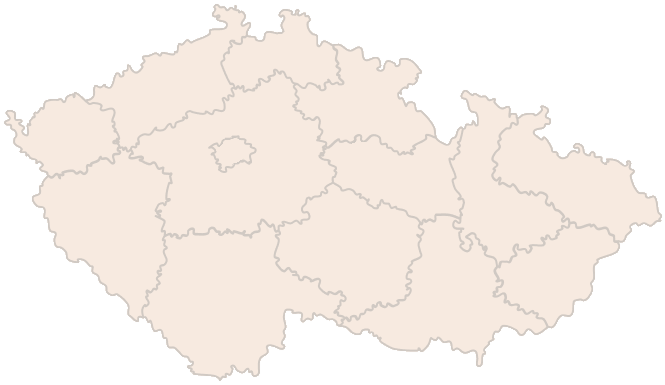Do you remember the film The Owners, in which Klára Melíšková insists relentlessly on having everything on paper and everything being legally valid? This comedy drama outlines the reality of house meetings, where minutes are one of the subjects of humorous discussion among the participants.
Minutes are taken at meetings, during a quickly convened meeting, during a council meeting and during an owners’ association meeting. Often, what is not on paper does not exist. Not only as evidence, it is therefore necessary to keep the minutes carefully and to observe certain formalities. Some are even required by law and the recorder has a responsible role.
General requirements for minutes
Let us start in general terms. None of the minutes should lack a few basic elements that ensure transparency and make them easier to navigate for anyone who needs to find something in them. In particular, the following information:
- First of all, provide identifying information. This means writing down the date, time and place where the meeting took place. Then add the name of the organisation or institution under which you are taking the minutes.
- Second, list the participants. In the list of attendees, also mention their functions (e.g. chairperson, recorder, verifier).
- Next, write down the agenda. Write a brief summary of the items discussed.
- Now comes the most important part – the content of the meeting. Include a summary of the discussion for each agenda item. Record the decisions, resolutions and individual tasks, including who is responsible for processing them.
- Finally, the conclusion. Record in the minutes the time when the meeting ended. The signatures of the recorder, verifiers and the chair should not be missing.
If you stick to this general structure, you should have no major problems with the minutes. However, some specific types, such as the minutes of a meeting or the minutes of a membership meeting of an association, still have some specific requirements. We will look at these now.
Are you solving a similar problem?
Trust us with your legal matter
When running a municipality, representing an association or simply in everyday life, situations may arise where you could use the advice of a lawyer. Our service is exactly for these cases. Simply send us your enquiry online and we will get back to you within 48 hours. Whether you need advice about a statute or a disagreement with a neighbour.
I want to know more
- When you order, you know what you will get and how much it will cost.
- We handle everything online or in person at one of our 6 offices.
- We handle 8 out of 10 requests within 2 working days.
- We have specialists for every field of law.
How to take the correct minutes of a membership meeting
The minutes of the association’s membership meeting carry important legal weight because they document the decisions of the membership. According to the Civil Code, associations are obliged to keep these minutes in case of inspection or dispute resolution. Minutes must be taken within 30 days of the meeting.
Required elements:
- Convener and method of convening: who convened the meeting and how (e.g. in writing, by email).
- Date and time of the meeting: When the meeting took place.
- Chair: Who called the meeting to order and who chaired it.
- Quorum: Information on whether a quorum was present, i.e. whether the required number of members was present.
- Election of officers: Which other officers (e.g. recorders, verifiers of minutes) were elected by the membership.
- Resolutions: What resolutions were passed, including the exact wording of those resolutions.
- Brief summary of discussion: The minutes should include a summary of the discussion of the items discussed.
- Signature of the recorder and verifiers.
Unless otherwise stated in the bylaws, members of the association have the right to review the minutes of the meetings.
All members must be informed in a timely manner of all important matters concerning the activities of the association. If the statutory body neglects to inform the members of important matters, the members may demand redress or even initiate the removal of the statutory body.
What proper minutes look like
Minutes are used for meetings of corporate bodies, work teams or interdisciplinary groups. It is a brief but concise document that summarises the key points of the discussion and the conclusions reached.
Whether it is a company AGM or a municipal council meeting, the minutes must contain certain mandatory elements. These may vary slightly depending on the type of meeting, but generally include:
What it should contain:
- Identification of the corporation or municipality: The business name and the name of the corporation (in the case of a general meeting) or the name of the municipality.
- Date and time of the meeting.
- Persons present at the meeting: names of the chairman and recorder and a list of members present, including excused and unexcused members.
- Approved agenda .
- Conduct of the meeting: Brief description of the discussion of each item on the agenda. Record of the discussion, including the names of the speakers.
- Resolutions: Resolutions adopted, indicating the results of the vote (how many in favour, against and abstentions). Include the content of any protests or objections from members.
- Signatures: The minutes must be signed by the chairman and the recorder, or other verifiers (e.g. mayor and deputy mayor in the case of a municipality).
- Annexes: Any motions and declarations presented at the meeting or other documents related to the decision (e.g. contracts, decision-making documents).
Minutes of the council meeting
The minutes of a council meeting usually have stricter requirements as they serve as an official document for the public. Its format is regulated by the Municipal Act and may be further specified in internal guidelines. The minutes of council meetings often play a key role in informing the public and documenting the decisions of the local authority. Moreover, these minutes are often publicly available and should therefore be as accurate and concise as possible.
Minutes of council meetings must be taken within 10 days of the meeting. The exception is Prague, which has 7 days to take minutes. These minutes must be kept at the municipal office for inspection.
Mandatory elements of the minutes of the council meeting:
- Number of members present: The minutes must state the number of councillors present. This provides evidence of a quorum. It should also include a list of the names of the councillors present, excused and unexcused.
- Approved agenda: The approved agenda that was discussed must be stated.
- Voting process and result: The minutes should also include a description of the voting process and add the specific results (how many in favour, against and abstentions) and any discussion on individual items.
- Resolutions adopted: The record must include all resolutions adopted with their exact wording. Sometimes it happens that a resolution is too long, in which case it can be included as an annex.
- Signatures: The minutes must be signed by the mayor or deputy mayor and at least two designated verifiers.
- Date and place of the meeting: As with other minutes, the date and place of the meeting must be stated.
- Changes in the number of members present: If there is a change in the number of members present during the meeting itself, the recorder is obliged to record this change.
- Name of the minute taker: The minutes should show who took the minutes.
Minutes of the meeting
Meetings tend to be fast-paced and dynamic. To facilitate note-taking, it is advisable to have a template of the minutes of the meeting prepared in, for example, Word format. You can also take notes in a pre-prepared spreadsheet. This will ensure that no important topic is left out and that all necessary information is recorded.
Key parts of the minutes:
- The title and purpose of the meeting – For example, “Weekly IT Team Meeting – Incident Handling”.
- Overview of items discussed – A brief but clear summary.
- Conclusions and decisions made – Including responsibilities and deadlines.
- Overview of tasks – Who is responsible for what and when it is due.
- Next steps – What will follow the meeting.
Tip for article
Are you planning to start a society but don’t know how to do it? In our article, we will not only advise you how to set up a company, but we will also advise you how to proceed with the registration court.
Role of the recorder
The recorder is the person responsible for the accuracy and completeness of the minutes. Their main tasks include recording information quickly and accurately, ideally during the meeting itself. He or she must also structure the minutes, i.e. follow a prescribed template. At the same time, the recorder must ensure clarity and readability, or use simple and formal language. Before final approval, the recorder must verify the accuracy of all the information in the minutes.
In some cases, the recorder may have technical tools, such as a dictaphone, for possible (back) checking.
Tips for note-takers:
- Use shortcuts for faster note-taking.
- Be clear in advance what is key and what can be omitted.
- After the meeting, review and complete the minutes as soon as possible.
Avoid these common mistakes when taking minutes
The most common pitfall of minutes is that they lack crucial information such as the date, venue or decisions taken. If the minute taker does not structure the minutes sufficiently, the result will be a messy and unclear document that few people will understand. It is also important to meet the mandatory deadline for the minutes, which is not always the case. Last but not least, a poor record contains unclear information that makes it impossible to understand or understand clearly even after a long period of time.
Summary
The minutes of a meeting, a membership meeting or a council meeting always contain basic elements such as the date, time and place of the meeting, the list of participants, the agenda, the proceedings, the resolutions adopted, signatures and any annexes. The specifics of the minutes vary according to the type of meeting, with legal provisions also playing a role in the case of a council or association membership meeting. Carefully structured minutes not only prevent misunderstandings but also ensure that important information can be easily retrieved.




